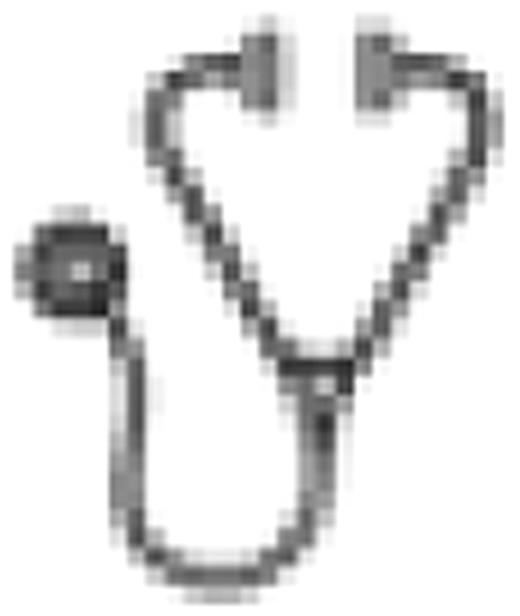Abstract
Abstract 110
Mantle Cell Lymphoma (MCL) has been characterized by poor long term prognosis with a median survival of only 3 to 4 years. However, outcome has improved during the last decades. In its first randomized trial, the MCL net demonstrated that myeloablative consolidation followed by ASCT resulted in a significant prolongation of PFS in advanced stage MCL (Dreyling et al Blood 2005). Recent phase II studies suggested that the addition of rituximab to CHOP like chemotherapy and/or high dose ARA-C may significantly improve remission rates and PFS. A French phase II trial using sequential R-CHOP/R-DHAP followed by ASCT showed an overall response rate of 95% with a CR rate of 61% translating into a median EFS of 83 months and a 75% survival rate at 5 years (Delarue et al ASH 2008).
To evaluate the potential superiority of a high dose ARA-C containing regimen, the MCL net initiated a randomized trial comparing 6 courses of CHOP plus Rituximab followed by myeloablative radiochemotherapy (12 Gray TBI, 2×60mg/kg Cyclophosphamide) and ASCT (control arm A) versus alternating courses of 3x CHOP and 3x DHAP plus Rituximab followed by a high dose ARA-C containing myeloablative regimen (10 Gray TBI, 4×1,5 g/m2 Ara-C, 140mg/m2 melphalan) and ASCT (experimental arm B). Patient eligibility criteria included previously untreated MCL stage II-IV up to the age of 65 years. Histological diagnosis was confirmed by a central pathology review board. The primary end point time to treatment failure (TTF) was monitored continuously by a sequential procedure based on a one sided triangular test. Stable disease after induction, progression or death from any causes, were considered as treatment failure. Sample size was calculated to detect a hazard ratio of 52% for arm B with a power of 95%. Randomization was stopped as soon as a significant difference was observed between the two arms.
From July 2004 to May 2010, 497 patients were randomized in 4 countries (Germany, France, Poland, Belgium). The 391 patients evaluable for the primary analysis (19 no MCL, 87 not yet documented) displayed similar characteristics in both treatment arms: median age 55 vs 56 years, male 78% vs 79%, stage IV 85% vs 79%, B symptoms 43% vs 33%, ECOG >2 5% vs 5%, elevated LDH 37% vs 38%, and MIPI low/int/high risk 61%/25%/14% vs 62%/23%/15%, respectively. After induction overall response was similarly high in both arms (A: 90% vs B: 94%; p=0.19) and CR rate and combined CR/CRu rate were significantly higher in arm B (26% vs 39%; p=0.012 and 41% vs 60%; p=0.0003). The number of patients transplanted was similar in both arms (72% vs 73%) and after transplantation overall response and CR rates were comparable in both arms (97% vs 97% and 63% vs 65%, respectively). After a median follow up of 27 months, patients in arm B experienced a significantly longer TTF (49 months vs NR; p=0.0384, hazard ratio 0.68) mainly due to a lower number of relapses after CR/CRu/PR (20% vs 10%), whereas the rate of ASCT-related deaths in remission was similar in both arms (3% vs 4%). Although CR rate after ASCT was comparable in both arms, remission duration (RD) after ASCT was superior in Arm B (48m vs NR; p=0.047). Interestingly, for patients in CR after ASCT, RD after ASCT was also presumably superior in arm B (51 months vs NR; p=0.077). At the time of analysis overall survival was similar in both arms with medians not reached and 79% vs. 80% survival rates at 3 years (p=0.74). Safety after induction was comparable in both arms except for an increased grade 3/4 hematological toxicity (Hb 8% vs 28%, WBC 48% vs 75%, platelets 9% vs 74%, respectively), an excess of renal toxicity (creatinine grade 1/2: 8% vs 38%, grade 3/4: none vs 2%), and more frequent grade 1/2 nausea and vomiting in arm B. Toxicities of both conditioning regimen were similar, except for higher grade 3/4 mucositis (43% vs. 61%) in Arm B, and higher grade 1/2 liver toxicity and constipation in Arm A.
High dose ARA-C in addition to R-CHOP+ASCT increases significantly complete response rates and TTF without clinically relevant increase of toxicity. Therefore, induction regimen containing high dose ARA-C followed by ASCT should become the new standard of care of MCL patients up to 65 years.
Walewski:Roche: Membership on an entity's Board of Directors or advisory committees, Speakers Bureau. Stilgenbauer:Amgen: Research Funding; Bayer: Consultancy, Honoraria, Research Funding; Boehringer-Ingelheim: Consultancy, Honoraria, Research Funding; Celgene: Consultancy, Honoraria, Research Funding; Genzyme: Consultancy, Honoraria, Research Funding; GSK: Consultancy, Honoraria, Research Funding; Mundipharma: Consultancy, Honoraria, Research Funding; Roche: Consultancy, Honoraria, Research Funding; Sanofi Aventis: Research Funding. Feugier:roche: Consultancy, Honoraria. Bosly:Roche: Membership on an entity's Board of Directors or advisory committees. Gisselbrecht:Roche: Research Funding.

This icon denotes an abstract that is clinically relevant.
Author notes
Asterisk with author names denotes non-ASH members.

